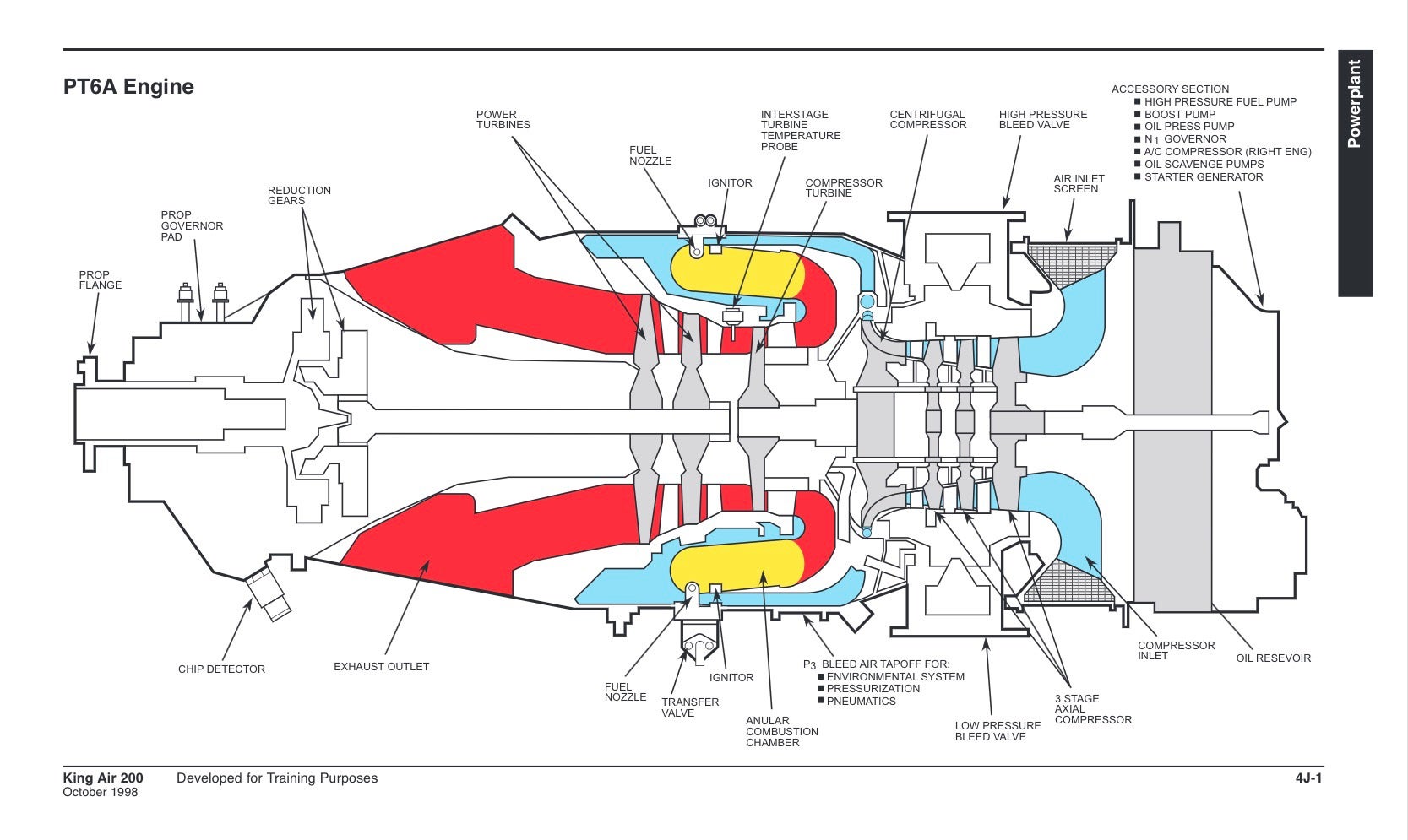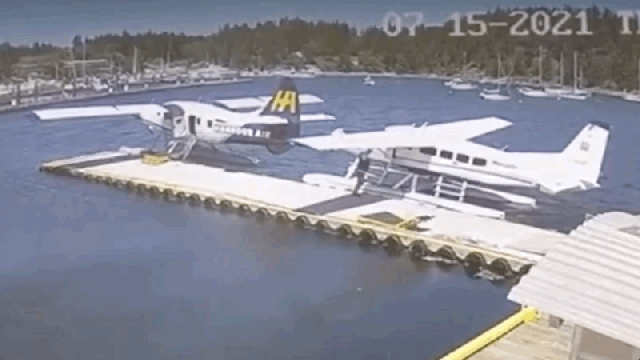A pair of floatplanes in Ganges Harbour, British Columbia, Canada, are left damaged after one accidentally rammed another at a dock. It’s a crash with a surprising amount of chaos for how slow it is.
On July 15 at a floatplane dock in Ganges Harbour, a Cessna 208 floatplane owned by Seair Seaplanes fired up its engine, reports the Gulf Islands Driftwood. The plane was preparing for a flight to Vancouver International Airport. Ahead, a Harbour Air Seaplanes de Havilland DHC-3 Otter sat parked and empty. Surveillance camera shows the plane spinning its propeller for a while before suddenly beginning to move forward.
It’s hard to tell what the person on the dock is doing, but it appears like they’re untying the Cessna from the dock in the seconds before it begins its short taxi into the tail of the de Havilland. One thing is for sure, once that plane got moving, the person on the dock wasn’t stopping it by holding onto the wing’s strut.
The Cessna’s propeller chopped up the de Havilland’s tail, ripping off its rudder and elevator in a pretty spectacular fashion before pivoting around the dock. The propeller stops its rampage on the de Havilland for a short time after getting stuck on what’s left of the horizontal stabilizer.
The turboprop Pratt & Whitney Canada PT6A engine of the Cessna is of a free-turbine design, meaning the power turbine is not physically connected to the compressor and is driven by exhaust gases. This design can allow the propeller to stop while the engine is still running.

Then, when the propeller is freed, it’ll start moving under engine power again. That said, the props of free-turbine turboprops will also spin in high winds when the engine is off, too.
It’s unclear why the propeller starts spinning again here, as the engine should have been stopped long before now, but it definitely wasn’t a great idea for the person on the dock to be that close to the action.
Another factor in this slow crash could be how the dock was made for smaller planes, from the Gulf Islands Driftwood:
Bart Terwiel has done transportation safety consulting work for Transport Canada and was HASSI’s manager from 2003 to 2007. He said it’s not surprising the accident occurred because the dock in question was designed for use with Beaver aircraft, which are smaller than the two planes involved in Thursday’s incident.
“You can put one of those [large] planes on the dock at one time, but not two,” he said.
The Transportation Safety Board of Canada (TSB) is investigating the incident and classified it as a Class-5 investigation. The TSB notes that a Class-5 investigation means that there is little chance that the investigation will conclude with recommendations to improve aviation safety as a whole.
Both planes will be towed out of the environment for repairs.
